
9 Common Blue Birds in Colorado (Pictures and Info) Animal Hype
The blue jay is a loud, daring, and aggressive passerine. It is a reasonably sluggish flier (roughly 32-40 km/h (20-25 mph)) when unprovoked. It flies with body and tail held stage, with sluggish wing beats. Its sluggish flying speeds make this species simple prey for hawks and owls when it flies in open areas.

The Blue Jay Canadian Lovely Bird Basic Facts & Information Beauty
The blue jay ( Cyanocitta cristata) is a passerine bird in the family Corvidae, native to eastern North America. It lives in most of the eastern and central United States; some eastern populations may be migratory. Resident populations are also in Newfoundland, Canada; breeding populations are found across southern Canada.

Species Spotlight Blue Jay
The Blue Jay's color comes from a brown pigment that is present in their feathers. ©Eleanor McDonie/Shutterstock.com. As the name suggests, this bird is blue. However, the color comes from a brown pigment that is present in their feathers. The bird is about 9 to 12 inches in height and merely weighs around 2.5 - 3.5 oz.

The Blue Jay Canadian Lovely Bird Basic Facts & Information Beauty
Blue Jays are omnivores and very adaptable when it comes to eating. Research reveals that, in their natural environment, about a quarter of their diet is composed of insects. Most of their diet is made of nuts, seeds and grains. A small percentage of the diet is composed of other invertebrates and small vertebrates - even carrion.
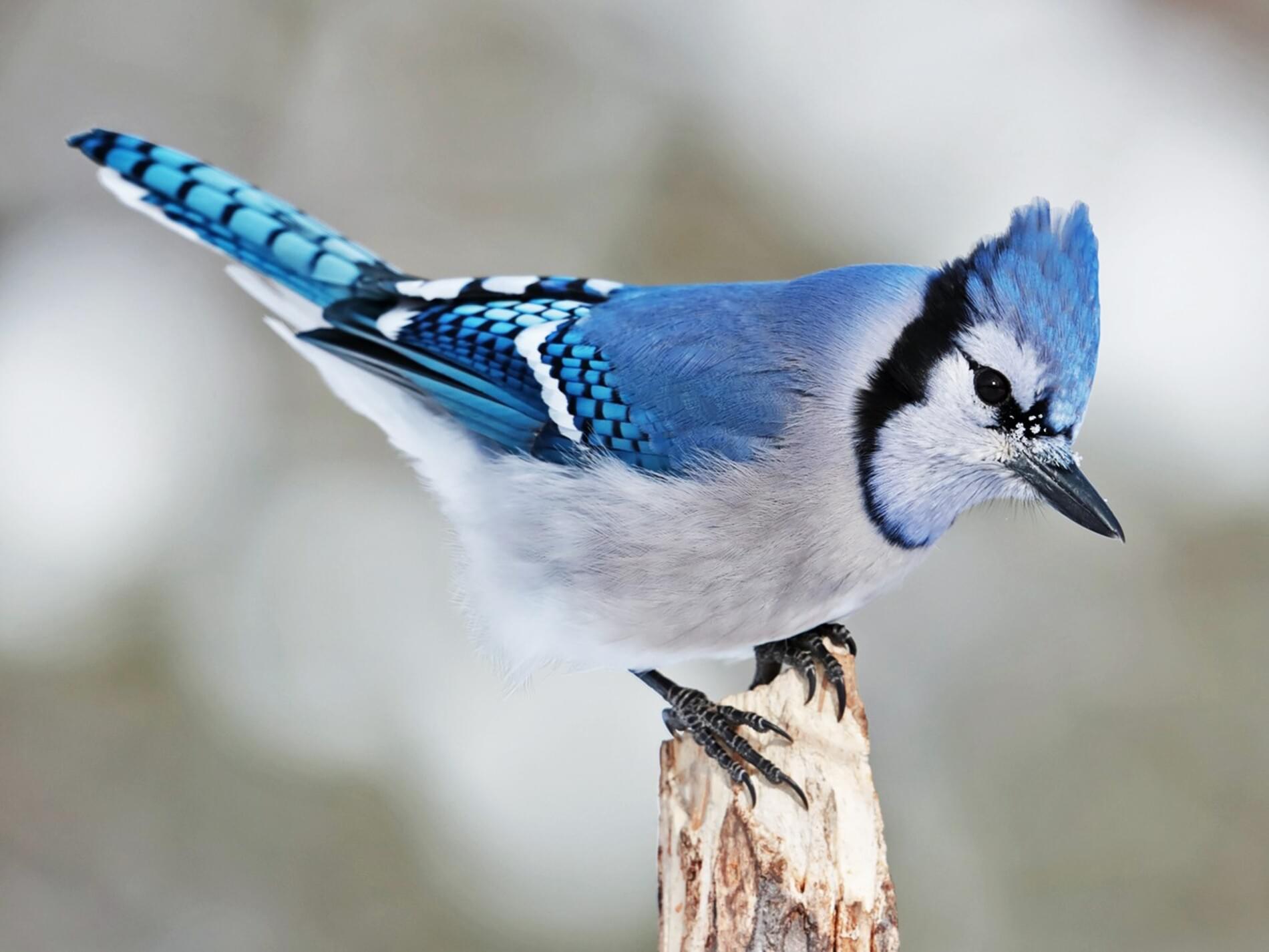
Blue Jay Celebrate Urban Birds
Blue Jay. At a Glance. Scientific Name:Cyanocitta cristata. Population: 17 million. Decreasing. Habitat: Forest edges, open woodlands, suburbs and cities with large, nut-bearing trees. The brash and beautiful Blue Jay is seldom regarded with indifference. Some think it's an aggressive bully, while others love its boisterous, sociable nature. A.

bluejayfacts2 Birds Flight
Description of the Blue Jay. These jays are relatively small, and typically have a maximum wingspan of 17 inches or so. They are primarily blue, with white undersides and chests. A black, U-shaped chinstrap runs down the sides of their faces and under their throats. This black band also runs behind the crest of feathers at the top of their heads.

Pictures and information on Blue Jay
These clever blue and gray jays are specialized to live in the sparse Florida scrublands, where they mate for life and raise their chicks with the help of older or "adopted" juveniles. Highly sedentary, the species doesn't venture far from its nesting place and will fiercely defend its territory from rival clans.
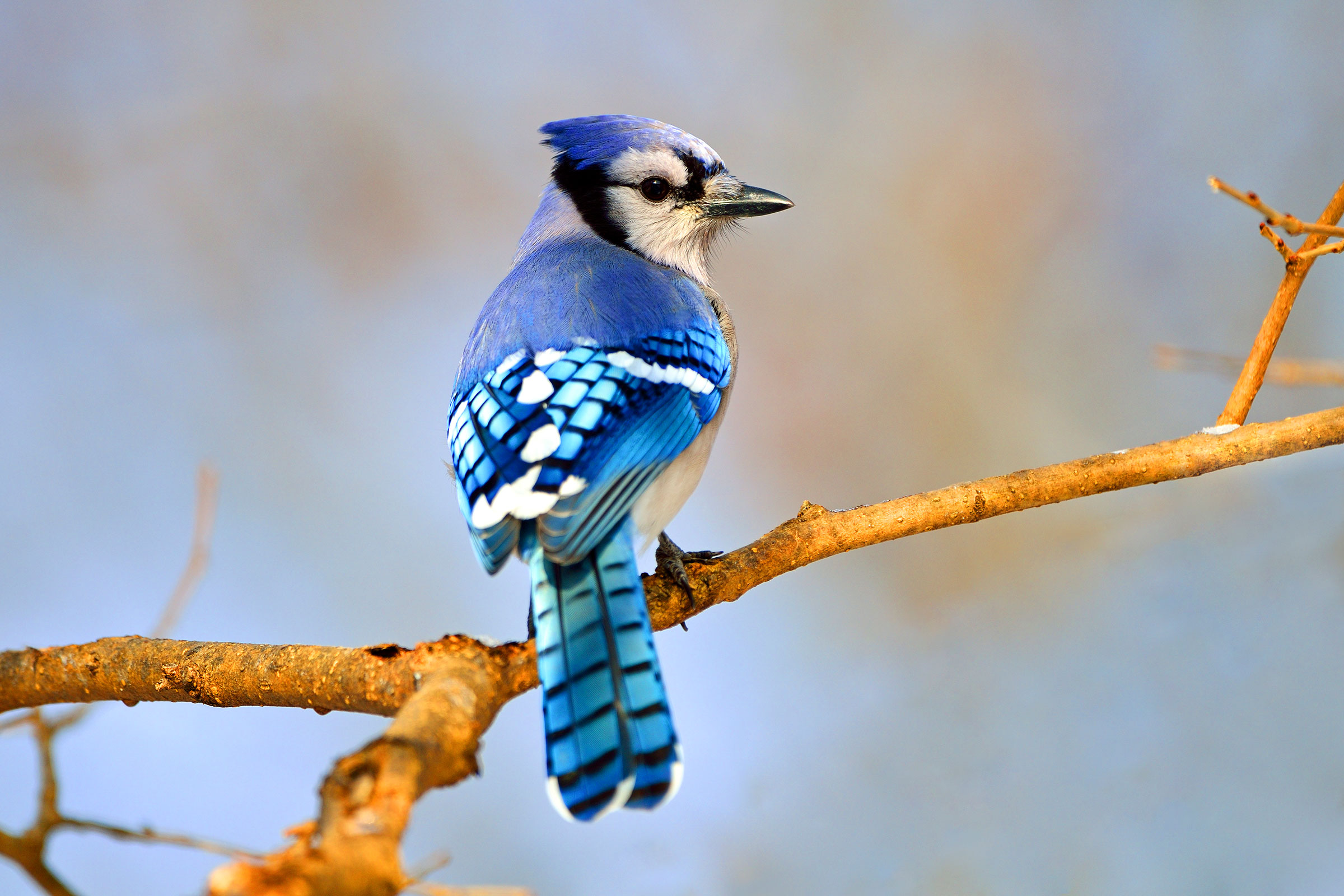
Blue Jay Audubon Field Guide
At least 10 types of jays live in North America. Courtesy Lorraine Lynch Types of Jays: Blue Jay Chances are good you've seen this type of jay the most. Though a rare visitor west of the Rocky Mountains, blue jays live throughout the Midwest and East. The bird is hard to miss thanks to its bright blue markings and a loud jayyy jayyy call.
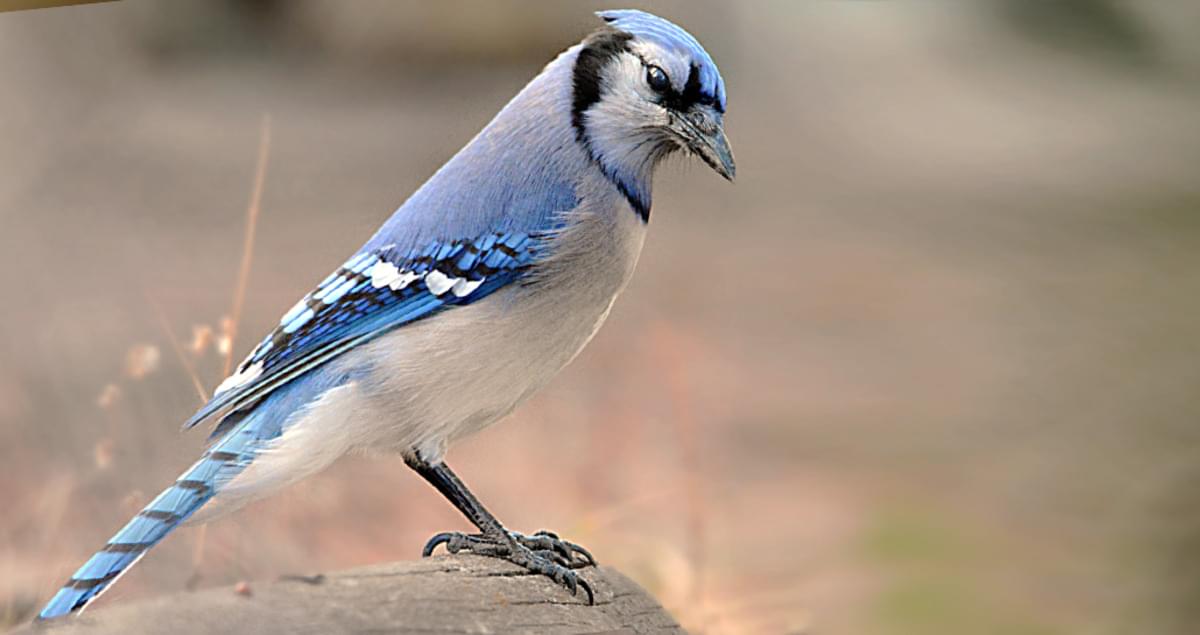
Photos and Videos for Blue Jay, All About Birds, Cornell Lab of Ornithology
Jays Geais Corvidae Information, images and range maps on over 1,000 birds of North America, including sub-species, vagrants, introduced birds and possibilities Enter Bird's Name in Search Box: www.birds-of-north-america.net There are ten species of jays in North America.
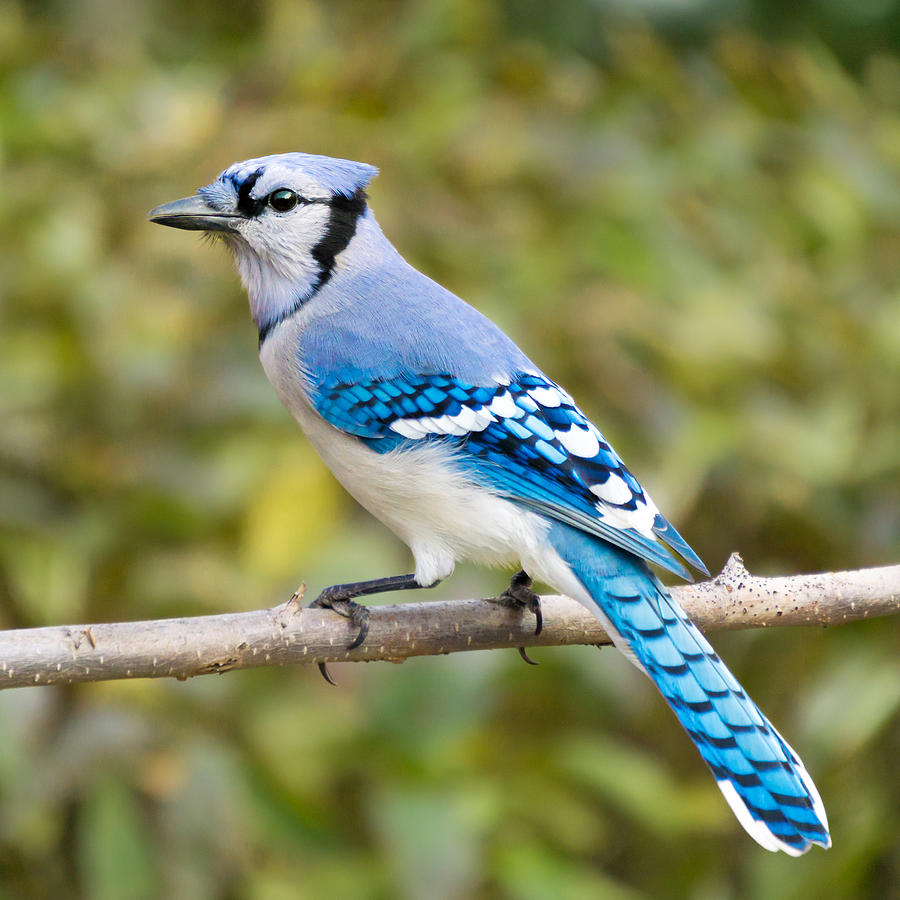
North American Blue Jay Photograph by Jim Hughes
g oz. Length. 22-30. cm inch. Wingspan. 34-43. cm inch. The Blue jay ( Cyanocitta cristata) is a passerine bird in the family Corvidae, native to eastern North America. The name jay derives from the bird's noisy, garrulous nature and has been applied to other birds of the same family, which are also mostly gregarious.

7 Other Jays in North America Fun Animals Wiki, Videos, Pictures, Stories
中文(简体) List Sign in Familiar but stunning jay found year-round throughout most of eastern North America. Bright blue above and pale gray below with a fluffy crest. Also look for black necklace and black and white markings on the wings and tail.

The Blue Jay Canadian Lovely Bird Basic Facts & Information Beauty
Blue jays are sometimes known to eat eggs or nestlings, and it is this practice that has tarnished their reputation. In fact, they are largely vegetarian birds. Most of their diet is composed of.
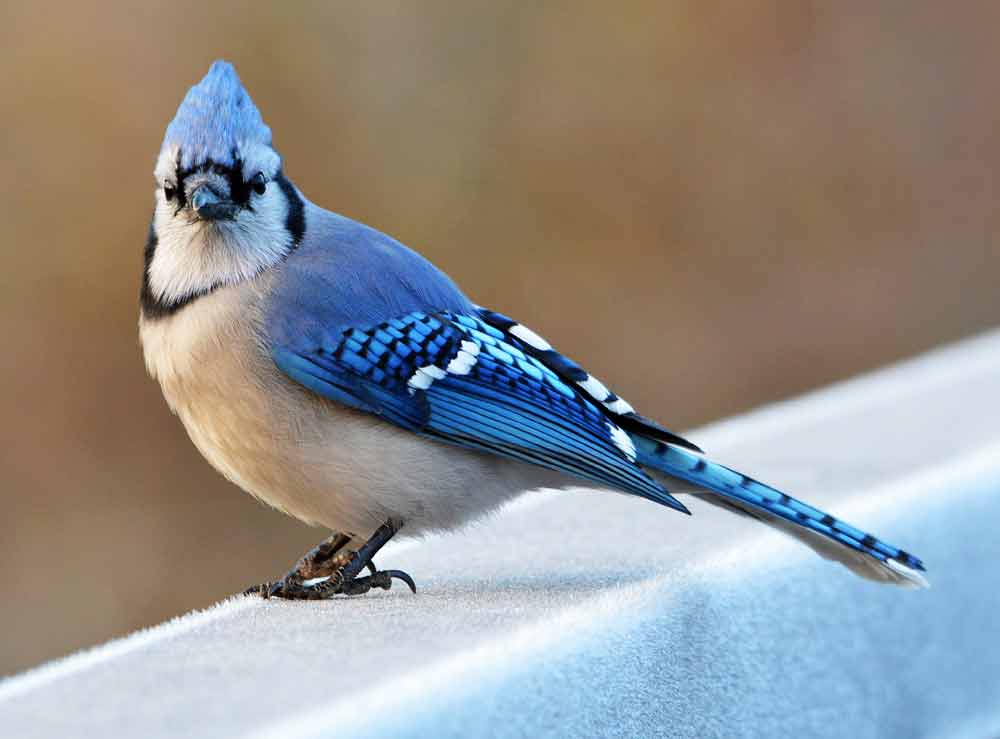
Blue Jay Bird Profile Facts Call Habitat Behavior Breeding
Uncategorized The term "blue jay" commonly refers to the species Cyanocitta cristata, known as the Eastern Blue Jay. However, it's worth noting that "blue jay" can also be used to describe other jay species with blue plumage. Here are a few examples: 1. Eastern Blue Jay (Cyanocitta cristata):

The Blue Jay Canadian Lovely Bird Basic Facts & Information Beauty
Florida Blue Jay. The Florida blue jay is the smallest of the blue jay subspecies. Their blue feathers are also one of the dullest of the subspecies and they have the smallest wings and tail. Of course, the Florida blue jay has the typical crest and white spots on the wings and tail. This blue jay gets its name because it is found mostly in the.
Two blue jay species are common sights for birdwatchers in San Diego
Swipe Up! Top 9 Largest Eagles in the World The 10 Strongest Birds on Earth and How Much They Can Lift Moreposts What Do Crows Eat? 15-Plus Foods They Love! But several birds are often mistaken for blue jays. Are there multiple species? Discover types of blue jay birds and learn about their locations and appearance.
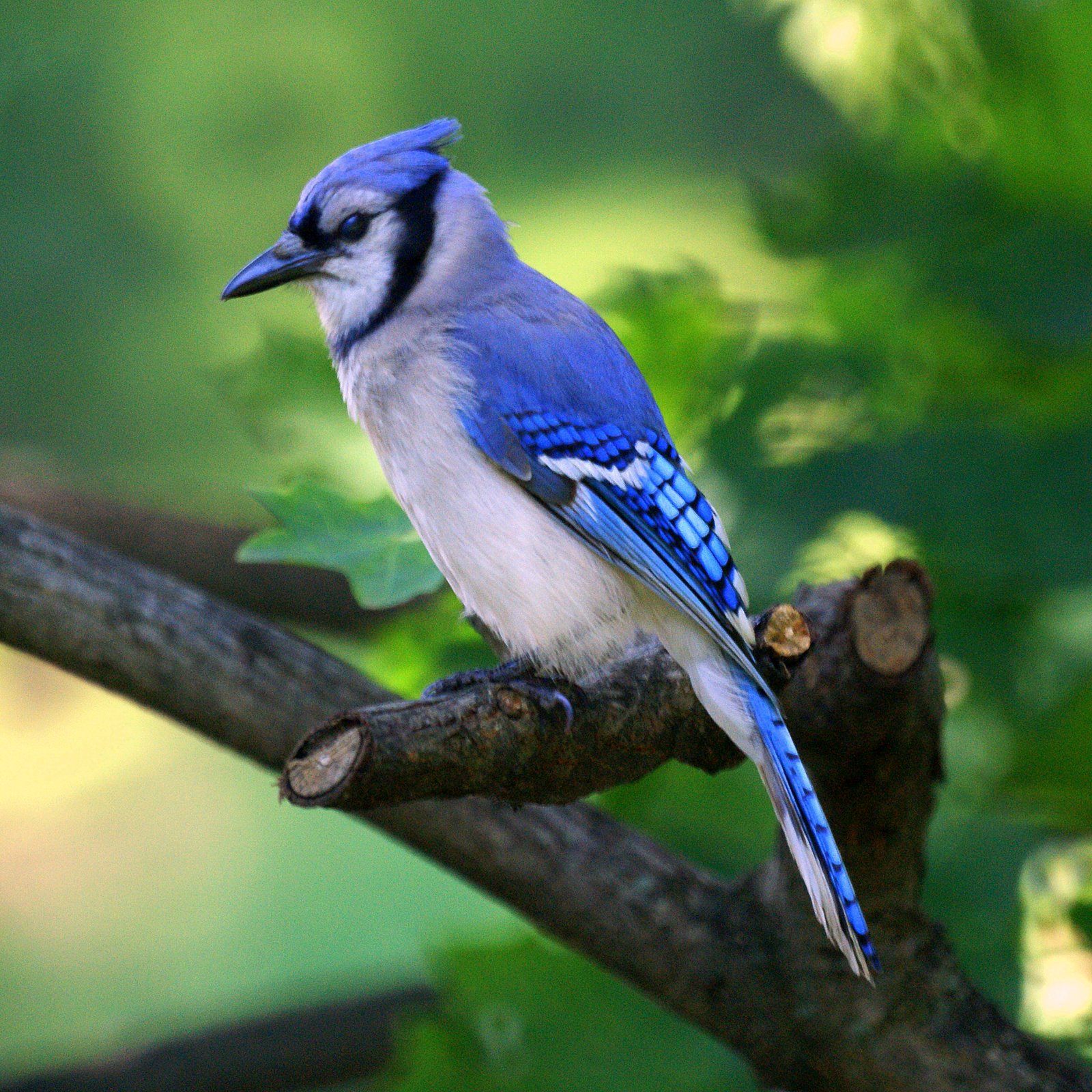
The Blue Jay Canadian Lovely Bird Basic Facts & Information Beauty
Blue Jays are common large songbirds with a blue upright crest, blue and black backs, and white undersides. Cyanocitta cristata; Length: 9.8-11.8 in (25-30 cm) Weight: 2.5-3.5 oz (70-100 g) Wingspan: 13.4-16.9 in (34-43 cm) Blue Jays live in eastern US states and Southern Canada all year. Some birds will migrate west for winter but not very.